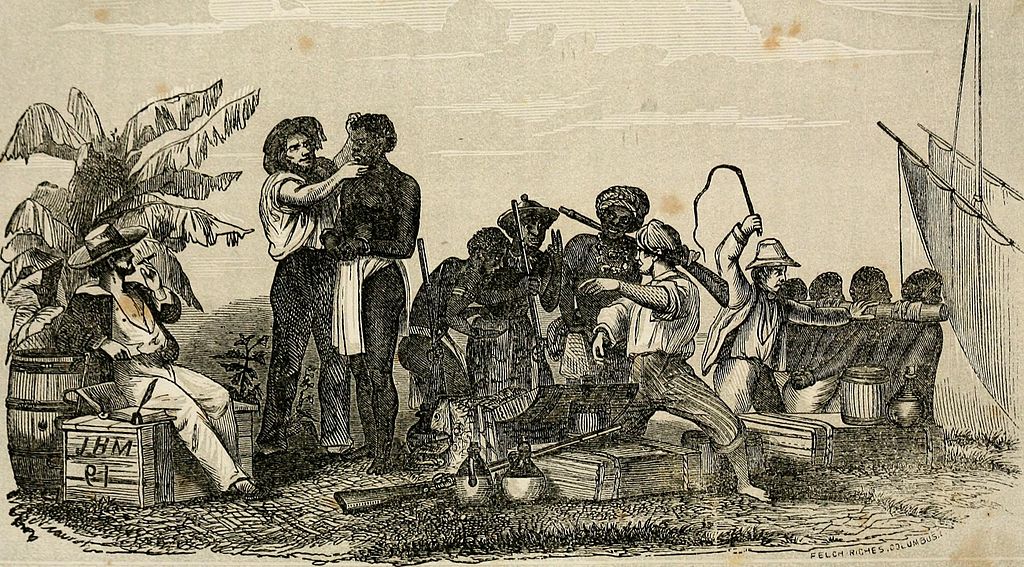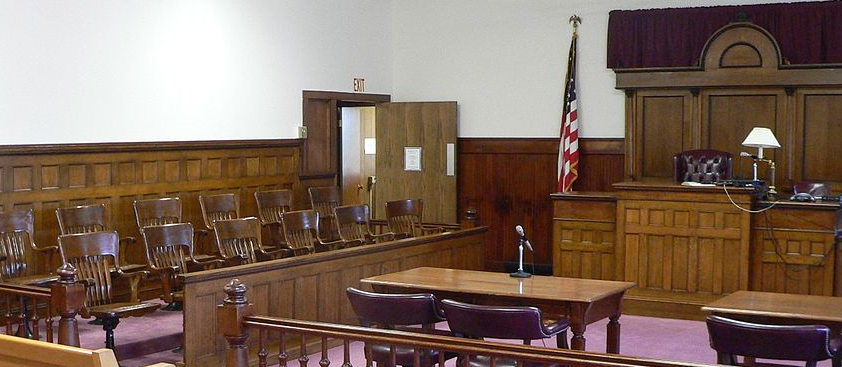Why Should I Trust The Bible: The External Evidence
The Bible is the most popular book ever printed. It’s estimated that over 100 million copies are bought or given away every year. It’s been translated to 349 languages, and the Bible Society estimates that 2.5 billion copies were printed between 1815 and 1975. Hard to say how many were printed before that.
Despite all of this, it remains one of the most scrutinized, critiqued, and attacked works ever created. Why is that? Well, for starters, it was completed over 2000 years ago. It was written in ancient languages. And we don’t even have the originals. We don’t have the copies, either. We don’t even have the copies of the copies. It doesn’t sound very trustworthy.
Before I was a follower of Christ, that’s where I was. I had a major roadblock in my way and that was the Bible. See, I had all of the above hangups in my mind. And more, actually. But, the more I dug into the Bible, the more I learned about its place in history and the place of other ancient writing in history What I discovered is that no other book has more evidence for the way it has been transmitted, the way it was created, and – more importantly – the things it says.
What I wanted to do in this article is share with you some of the evidence outside of the Bible I found on why we can trust it. 6 reasons we can trust that what we have today is an accurate telling of the teachings and events of the life of Jesus of Nazareth and his followers. So, let’s have a look.
The Bible As An Ancient Work
When trying to determine if the Bible is a reliable source of information, it is important to see how it stacks up next to some of the other works that we get our ancient history from.
First, let’s look at the life of Alexander The Great. We know a lot about his life, his military conquests, and many of the other things he did. This information comes primarily from two authors – Arrian and Plutarch
Next, we have the biographies of twelve Caesars starting with Julius Caesar and going to Domitian. We get these from a Roman historian named Suetoneus. Another historian from whom we get much of our knowledge regarding the 1st century Greco-Romain world is Livy (59 BC – 17 AD). And, we also have a historian named Tacitus wrote a biography for Tiberius Caesar – the emperor on the throne when Jesus was executed.
We know about ancient Greek culture and politics through the orations of a politician named Demosthenes. Theucydides gave us his great work on the Peloponesian War between Athens and Sparta. And, finally, we have Herodotus – the “father of history” who, in his work Histories, gives us a detailed account of the Greco-Persian War.
With those things in mind, let’s now go through the external evidence for why the Bible is trustworthy
1. The Bible Was Written Early
Textual critics use several factors including the language used, the absence of events, the inclusion of events, and other narrative clues to determine when a text was first written Historians agree that Jesus most likely died in either 30 or 33. Based on the criteria above, scholars have dated the manuscripts of the New Testament from 40-45 A.D. (the epistle of James) to 95 A.D. (Revelation). There are competing theories as to which gospel was written first, but the prevailing theory is that it was Mark between 50-55 A.D.
25 years between when an event occurred and when it was documented seems like a big gap. But, consider this. Plutarch’s writings on Alexander the Great came 400 years after Alexander’s death. The sources for Tiberius Caesar – 80 to 180 years after his death. So, a 25-year time gap is nothing compared to the gaps we have for some of our most famous ancient historical figures.
As another comparison let’s take one of the most tragic events to happen in US history in the past several decades – 9/11. That was 20 years ago as of this writing. I still remember the details of that day pretty well. Enough that I could write a few pages about it. And that’s me – 3000 miles away from the event only seeing it on TV. Imagine all the things that the eyewitnesses of the actual events could still recall to this day. For the rest of their lives, really. 25 years is nothing for those kinds of impactful events.
2. The Gospels Are Eyewitness Testimony
In his book Cold-Case Christianity, former homicide detective J. Warner Wallace gives a list of criteria he used in his investigations to determine if someone was a reliable eyewitness. First off, were they present? Were their accounts corroborated? Were they accurate? And, finally, were they biased? Jim writes a chapter on each one of those criteria in his book and shows how the gospel writers meet EVERY SINGLE ONE of those criteria. In fact, it was because they met all of the criteria that Jim started paying attention to what they reported. As an atheist.
In other words, the people whose names are attributed to the Gospels are the ones who wrote them shortly after the events they record. We don’t have one eyewitness account of the life of Jesus – we have 4. All of the things they record – the cities, the people, the buildings, the geography – are all accurate to the time they record. Also, these men had nothing to gain and everything to lose by writing and doing what they did. They had no motivation to lie. Based on all of this, we can comfortably say that the Gospels were written by people who were actually there to witness the life of Jesus of Nazareth
3. We Could Reconstruct Jesus’ Teachings From Secondary Sources
The writings of the early followers of Jesus didn’t stop with the apostles. We have writings from many of the early church fathers – who would have been students taught by the apostles. These would be people like Clement, Polycarp, and Ignatius. They continued the tradition of writing letters to churches giving them advice. They also wrote out many of their thoughts as they worked through theological topics and issues of the day. And many of their writings either directly quote the Bible or they are lessons and ideas from the teachings of Jesus that are rephrased.
There are dozens of secondary sources in the first 2 Centuries. But, just by looking at the letters of three of these men – Clement, Polycarp, and Ignatius – we get the following ideas that are also taught in the New Testament
- The Old Testament predicted Jesus’ coming
- Jesus is Divine
- The Apostles (and many others) learned directly from Jesus
- Jesus performed Miracles
- Jesus’ mother was a virgin when he was born
- Jesus was a real person who lived, taught, cared for others, was arrested, and was executed
- Jesus rose from the dead as evidence of his divine nature
4. The Gospels Haven’t Changed Over Time
Skeptics of the Bible will often point out that the official canon of Scripture wasn’t established until the Council of Laodicea in AD 364. At this council, 2 of the 60 rulings they passed down had to do with the canon. They listed the books that were approved to be taught from in the church and to be considered Scripture. Also, the oldest complete copy we have of the New Testament (Codex Sinaiticus) has been dated to about AD 350.
That’s a big gap of time, though. Almost 300 years between when the New Testament was supposedly written and the first fully constructed copy that we have. That’s a lot of time for things to get added, embellished, changed, or lost in transmission. What we need is a way to know if the originals have been faithfully transmitted and preserved from the time of their writing to the time of their canonization.
A Package In Transit
To think about this with a more modern example, let’s talk about something most of us are familiar with. Getting packages from Amazon. When I want a copy of the next book I want to read or the next tool I need for my woodshop, I go onto Amazon, click the button, and, if the system works as designed, I get my order a few days later.
But, what happens if my package never shows up? Well, Amazon has a very detailed trail of the package from the moment I click the button to the moment it gets delivered. As soon as my order gets processed, I know where my package is starting from, when it gets delivered, and all the checkpoints in between. Now the delivery person even takes a picture of the package where they left it when it was delivered
All of these checkpoints are ways for Amazon and me to ensure the delivery of something I paid for. If I get the wrong thing – or, even worse, don’t get my package at all – we have a trail of checkpoints we can follow to see where things went wrong.
The Checkpoints of New Testament Transmission
The good news is we have those kinds of checkpoints for the source documents of the Bible and the teachings of Jesus. These checkpoints appear in the letters of who we call the early church fathers. These would have been the first 3 or 4 generations of believers who came after the apostles. We have numerous copies of the letters that these men wrote and can see what they believed at a given point in time. With these checkpoints, we can trace the contents of the New Testament from what was canonized, back through each of the church fathers’ letters and writings, and know what they were taught by the apostles. If what was canonized is maintained all the way through to the source documents, we know the information has been preserved accurately.
There are three lines we can focus on rather easily. All three of these lines start with an apostle who has writings included in the New Testament.
Let’s start with John (ca 6-100), the son of Zebedee and the brother of James. He wrote one of the Gospels, 3 letters, and the book of Revelation. John taught Ignatius (AD 35-117) and Polycarp (AD 69-155). Ignatius and Polycarp taught Iranaeus (AD 120-202). And Irenaeus taught Hippolytus (AD 170-236).
We have even better chains for Paul and Peter. Paul taught Linus and Clement. Both of these men are mentioned specifically in association with Paul in the New Testament – Linus in 2 Timothy 4:21 and Clement in Philippians 4:3. From Clement to Evaristus (AD ? – 109) to Alexander 1 (AD ? – 115) to Sixtus I (AD ? – 125) to Telesphorus (AD ? – 136) and on and on to Justin Martyr (AD 103 – 165) to Tatian (AD 120 – 180).
For Peter, we have the longest timeline of all. It starts with the Gospel of Mark (we know that Mark was using Peter as his primary source when he wrote his Gospel). Mark taught many people when he established the church in Alexandria. One of them was Justus (AD ? – 135) Justus taught Pantaenus who taught Clement of Alexandria (AD 150 – 215) who taught Origen (AD 185 – 254) who influenced Pamphilus who taught Eusebius (AD 263 – 339).
We have writings for the vast majority of names in these chains. According to Dr. Dan Wallace, Executive Director for the Center For The Study Of New Testament Manuscripts, the early church fathers quoted the New Testament over 1 million times in their writings. If we look at their writings, we will see that from the beginning, the apostles and their students taught that Jesus was God, that he rose from the dead, that he was the fulfillment of Jewish prophecy, and on and on. In several of the pieces, we also get lists of books of the Bible that had been written and should be studied. Following this trail, we can affirm that the source documents have been unaltered through their transmission
If you want a more thorough review of each of these church fathers and what they wrote, check out Chapter 13 of Cold-Case Christianity.
5. We Have “An Embarrassment Of Riches”
When working with ancient manuscripts, historians rely on multiple copies of an original work in order to ensure the copies that we have accurately represent the original. Up until the printing press was invented in the 1500s, everything was copied by hand. Scribes make mistakes. So, the more copies we have for comparison, the closer we can get to what the original said. For example, if we have 3 manuscripts that say “Jesus wept” and one that says “Jesus, the Son of the Most Holy, may he reign forever and ever Amen wept”, we can assume that the odd one out has stuff added to it. If 3 manuscripts word it one way, and one words it a different way, you go with the ones that agree.
I listed the ancient historians at the beginning because I think it would be helpful to compare the New Testament documents with them. They gave us the works in which we get most of what we know about the ancient Greco-Roman world – the figures, the wars, the way of life, etc. And, if the New Testament has a similar amount of copies for comparison, we should trust it the same way we do our other sources of ancient history.
In a video titled “An Embarrassment of Riches”, Dr. Wallace gives these statistics for comparing the New Testament manuscripts to the works of other ancient authors.
First, the ancient historians Livy, Tacitus, and Suetonius. For Livy, the earliest manuscripts we have of his work are from 300 years after he wrote them. And we have about 30 copies. For Tacitus – considered by many to be one of the greatest historians of the day – 800 years and 3 copies. Suetonius is a little better on the total manuscripts. For him, we have about 200. But, the earliest copies are from the 9th century.
Dr. Wallace doesn’t mention the works of Heroditus (remember – the “father of history”). For him, we have 8 copies. 8. The Father of History. And the earliest manuscripts are from a thousand years later.
So, how does the New Testament stack up? Well, now you’re about to see why this section is entitled “An Embarrassment of Riches”. As far as copies go, we have about 5800 manuscripts of the New Testament in Greek alone. We have another 10,000 in Latin (which started in the 2nd century). Hundreds more in Coptic, Syriac, Georgian, Gothic, Arabic, and many others. In total, we have around 15,000 copies not in Greek. 20,000 with Greek
Now, keep in mind, with these ancient documents they aren’t all complete copies. There are a lot of fragments and pieces missing. The earlier you go the less there usually is of them left. That goes for both the New Testament and the other ancient works. But, this isn’t really an issue because we have multiple copies of the same thing to reference against each other.
Now, let’s talk about the age of the New Testament manuscripts. The oldest manuscript we have – a fragment of the Gospel of John – is from AD 100-150 We have as many as 10-12 that can be dated to the 2nd century. Within 300 years, we have over 100 manuscripts in Greek alone.
The average classical author has fewer than 20 copies of his works still in existence. For visual reference, if we took those manuscripts and stacked them on top of each other that would be about a 4-foot high stack. The New Testament – almost a mile high.
6. The Bible Is Corroborated By Outside, Hostile Sources
The final reason we should trust the Bible is that many of the events it discusses are backed up by outside sources. Even better, many of them are hostile to Christianity. None of these sources are praising Jesus or Christians. But, we can gather many facts from their writings that do corroborate many of the historical claims in the Bible.
Who are these sources? They are historians of the day who wrote about their dealings with Christians in their letters and books. People like (1)Thallus, (2)Tacitus (we talked about him earlier), (3)Mara bar Serapian, (4)Phlegon, (5)Pleny the Younger, and (6)Josephus. That’s six different, non-Christian sources we have to back up the events of the New Testament. We actually have more sources for the life of Jesus than we do for Julius Ceasar!
So what claims from the New Testament are supported by these sources? Here are some of the facts they attest to as well as the sources that back up these facts.
- Jesus lived (1,2,3,4,5,6)
- He was a Jew (3.6)
- He was a wise teacher (3,6)
- Jesus was an accurate predictor of future events (4)
- He was brought up for execution by the Jewish leaders (3.6)
- Jesus was executed by crucifixion (2,6)
- The crucifixion was administered by Pontius Pilate (2,6)
- Tiberius was the emperor at the time of the execution (6)
- The sky was darkened on the day Jesus died. (1,4)
- There were earthquakes on the day Jesus died. (1,4)
- Groups of Jesus’ followers existed. (2,5,6)
- Early Christians believed supernatural events revolving around the life of Jesus (2,5,6)
- Early Christians met regularly to worship Jesus as a god (5)
- The early church consisted of many different ethnic groups, free people, slaves, men, and women. (5,6)
- People of low social status (women and slaves) held offices in the church. (5)
- Early Christians had a strong moral code that they followed. (5)
- The early Christians were persecuted (2,5)
Now, these sources don’t seem to believe in the supernatural events that happened in the New Testament. But, they do document the natural events (earthquakes and the sky darkening on the day Jesus was executed). And, even though these sources didn’t believe in the supernatural events, more importantly, they tell us that the first Christians did.
The External Evidence Tells Us The Bible Can Be Trusted
Despite being a collection of writings from over 2000 years ago, we can trust that the Bible we have today is what was written originally. It was written shortly after the events it records, the people who authored it were eyewitnesses to the events they document, many of the things from the New Testament can be found in contemporary secondary sources, we can follow what the students of the authors believed to see that the message was unaltered, we have tens of thousands of copies of the manuscripts to make sure we can accurately reproduce the originals, and even non-Christians of the day back up some of the things found in the New Testament.
No other historical work can make those claims. And yet, we trust them. So, why not the Bible?
Share This Story, Choose Your Platform!
latest video
news via inbox
Subscribe and never miss an update!








Reading this helped me understand more in ways how externally to prove the Bible. Liked the argument of how even though 9/11 was 22 years ago many people can still write very clearly about it. Just how it would have been for the written accounts of Jesus around 25-30 years ago.
Hi Joseph,
Glad it helped you!
Thanks for your comment
This was very helpful for my doubts regarding the ceredibility of the Bible. Thank you.
Hi Ryan,
Glad it helped you! I have a second article about the internal evidence that I think you’ll enjnoy as well.
My agnostic brother was just asking me the other week why he should trust the Bible. I’m gonna send him this article.
Hi Mason,
Awesome! I hope your conversation goes well. Let me know how it goes.
I like these points because it gives me help to build a case for trusting the Bible based on evidence from outside the biblical text itself.
Hi Lindsey,
I’m glad you found it helpful. When I first learned these things, it really made me start trusting the Bible more.
This helped me because It provides clear historical and factual evidence to support the Bible’s authenticity, which can be valuable in discussions about its trustworthiness.
Hi Byron,
It’s extremely useful when talking about the Bible with non-believers. First, they have to feel that the text is accurate an reliable. And, THEN they have to deal with the claims it makes.
I loved reading this because it represents how the Bible, even when humanity doubts it, holds its own ground against our doubts and suspicions. And yet it also represents how creative its true Creator, working through the minds of humanity, has structured it to prove itself by using history, eye-witness accounts, and even time to present that it is a genuine and true book. Just love it, anyways, thanks for letting me read and it was an amazing article. God bless! And a good and joyful time in this vast life.
Hi Joseph,
Glad you enjoyed it! Hope it gives you more confidence in God’s Word.
These are definitely some points I can show my mom. Thank you so much!
Hi Dean,
Great! You’ll have to let me know how it goes.
Reading this helped me to know how to defend my faith and also help show others that the Bible is real and everything inside of the Bible is true. It is great with how it gives different points to help us know that the Bible is real and can be trusted.
HI KK,
Glad it was helpful!
This article is very reassuring and helpful. I think it takes more faith to believe it’s not true then it is true. This has a lot of proof for that.
HI Timothy,
Like you, I don’t have enough faith the believe the Bible is false ;)
This was very helpful for me to understand more about the Bible not just from a Christian evidence point of view but also with non-christian evidence that supports it.
Hi Madie,
Glad you found the article helpful. No other ancient work stands up like the Bible.
Even growing up with learning stories of the Bible; being able to know that these stories are not only stories but real life events. Just because it is ancient and many of the witnesses and people during the time did not have the technology to prove and credit the miracles and stories of the Bible, does not make it any less credible. Just how someone can say George Washington was the president and show written proof from eye witnesses, that is the same way the Bible works as well
Hi Ellie,
Great example with George Washington! We have to rely on eyewitness accounts for EVERY historical figure that existed before we were born.
Reading this helped me to see that there are many sources to help prove the Bible can be trusted!
this article helped me to understand how Jesus can be proven, with other historical texts and how they reference the existence of the life of christ
Its crazy how much evidence we have that the Bible has been passed down accurately, especially when you compare it to other ancient texts like those about Alexander the Great. Even though it was written over 2,000 years ago, the fact that we can still trust the Gospels and the teaching of Jesus based on eyewitnesses accounts and other sources make it pretty convincing.
This article was really good! The Bible is very trustworthy and I think this article did a very good job of proving that. Reading the Bible and trusting in it is so important.
This article really helped me understand why the Bible is a credible source. I always believed in the Bible because I believe in my faith and I was always told as a child that the Bible is important, that I should read it everyday, and everything in it is true. These are some of the things in this article that really helped understand why the Bible is a credible source. The people whose names are attributed to the Gospels are the ones who wrote them shortly after the events they record. We have 4 eyewitness accounts of the life of Jesus and everything they recorded such as the cities, people, buildings, and geography are all accurate to the time they recorded it. These men also had everything to lose and nothing to gain by doing what they did and they had no motivation to lie. There are also non-Christian sources that back up the events of the New Testament. We even have more sources for the life of Jesus than Julius Ceasar. All of this information really helped understand why the Bible is a credible source.
I think this article helped me answer some questions that I may have had but also help me explain it to someone who has questions about the bible. I like the example you gave about how the bible meets all the criteria to determine if it’s written by reliable eyewitnesses.
Amazing! I absolutely love how many accounts of people who could testify toward Jesus being who He was when they themselves weren’t even a follower!
I love the exapmle of Plutarch’s writings on Alexander the Great came 400 years after Alexander’s death. The sources for Tiberius Caesar – 80 to 180 years after his death. So, a 25-year time gap is nothing compared to the gaps we have for some of our most famous ancient historical figures. We believe in the other historical figures, we should place the same standard on Jesus. There is also much more evidence for Jesus’ existence than the other figures.
Growing up in the church I always believed in the Bible but this article has helped me come to an understanding of how I can know it is true. It is not just personal belief in the Bible but there is physical evidence that illustrates that the Bible and the stories in it are real.
This article makes a strong case for the Bible’s reliability, citing early manuscripts, credible eyewitnesses, and unparalleled manuscript evidence. It also highlights corroboration from early Christian writings and hostile sources, demonstrating the Bible’s faithful transmission over time. Its honestly so refreshing seeing a GOOD article finally explain the relevance of the bible :)
This was very helpful for me to understand more about the Bible not just from a Christian evidence point of view but also with non-christian evidence that supports it.
I really like how this article was not just from a Christian perspective, but also a non-Christian perspective, it really helped me understand.
This showed me a new side of the bible I have never thought about before. I have always thought about is as faith and I have always hoped it was true but this showed me the historical facts backing it up.
I truly appreciate that this essay gave both a Christian and a non-Christian viewpoint. This opened my eyes to a previously unconsidered aspect of the Bible. I’ve always considered it to be faith and hoped it was true, but this gave me historical evidence to support it.
I have a friend who believes in God but not the Bible. He thinks they are madeup stories. I want him to know the God I know. The way I know HIM. I feel like this article will be so helpful. Thank YOU for sharing!!!
Hi Renee,
Thanks for your comment! I hope this article can lead to some great discussions between your and your friend. Don’t forget to check out my article on the internal evidence for why we should trust the Bible. https://www.legatichristi.org/why-should-i-trust-the-bible-the-internal-evidence/
Thank you! I am using this and citing the source for my youtube video! Awesome information! I heard things but this puts it all nicely in one spot. I also have my internal evidence but it all works. I encourage you to start a youtube channel too and get this sort of information out there. God bless you!
: )
Hi Lily!
I’m glad you found the article so helpful! I actually do have a YouTube channel with some of my lessons on it. Here’s my presentation on why we should trust the Bible. It covers both the external and internal evidence. Enjoy!
https://youtu.be/cRNRwgpdARk?si=sIU2hwBHDMinjI7r